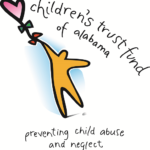Codependency is one of the most challenging problems that can be present in relationships. When relationships are impacted by addiction issues as well, codependent tendencies and behaviors usually become more apparent in the dynamic. Because there is no simple definition of codependency that fully addresses its intricacies, many people lack an understanding of why we experience codependency and how we can adjust our behaviors to live healthier lives.
Even if you can’t easily define codependency, I can almost guarantee that you’ve observed others exhibiting codependency or engaged in those behaviors yourself. Here’s a simple version of this: you’re at a family dinner and there’s that one family member (usually a mother or grandmother in the stories I’ve heard) who will not sit down to eat until everyone has been served. Oh, and they have to tidy up the kitchen area, too. and they need to prepare the dessert, answer that call, help a child use the restroom, check those emails, etc. Someone may try to get that person to just sit down already, but they can’t seem to rest easy and enjoy themselves until everyone is taken care of.
The behaviors in this example aren’t “bad” by any means. After all, it’s a common part of many cultures for  there to be at least one person who is the caregiver or nurturer for the family as a whole, and that person probably does all those things with a smile on their face. What we must acknowledge is that, while it feels good to care for others, it is important for caregivers to invest just as much time and energy into caring for themselves. Some codependent traits have wonderful intentions behind them, and many perceive codependent behaviors to be noble or gracious. But when those behaviors are causing burnout and when self-care behaviors are lacking or non-existent, codependency becomes toxic.
there to be at least one person who is the caregiver or nurturer for the family as a whole, and that person probably does all those things with a smile on their face. What we must acknowledge is that, while it feels good to care for others, it is important for caregivers to invest just as much time and energy into caring for themselves. Some codependent traits have wonderful intentions behind them, and many perceive codependent behaviors to be noble or gracious. But when those behaviors are causing burnout and when self-care behaviors are lacking or non-existent, codependency becomes toxic.
In the book Codependency No More by author Melody Beattie, she discusses a few definitions of the term codependency. Generally speaking, codependency is “an emotional, psychological, and behavioral condition that develops as a result of an individual’s prolonged exposure to, and practice of, a set of oppressive rules — rules which prevent the open expression of feeling as well as the direct discussion of personal as well as interpersonal problems.” Another definition Beattie mentions is: “Those self-defeating, learned behaviors or character defects that result in a diminished capacity to initiate or to participate in loving relationships. A codependent person is one who has let another person’s behavior affect him or her, and who is obsessed with controlling that person’s behavior.” I highly recommend reading her book if you haven’t already, because one chapter in particular highlights a host of different behaviors that many of us likely don’t realize are codependent.
A good starter-question to ask yourself to determine whether or not you experience codependency is this: when I’m making decisions, do others’ needs/wants come before mine on the priority list? We all know what it feels like to make a decision based on concern you have for another person’s reaction to that decision. A major leg of the journey of managing codependency involves turning our attention inward to identify what exactly we want and need. If we’ve used others and their responses as our primary measurement for decision making for many years, then our own desires might be unknown to us.
 In the context of addiction, codependency presents in a unique way when families are struggling to redefine boundaries. I often had patients in early recovery IOP groups who were tasked with rebuilding trust with their loved ones. A common example of a boundary issue that arises is when families need “proof” of actions that are being taken to help rebuild trust, and sometimes this meant considering action steps (i.e. bringing your spouse the receipt from the store to show you didn’t buy alcohol) that can be uncomfortable to carry out. Some patients felt they were being treated like children, and some loved ones felt awkward enforcing boundaries like that. Ultimately, if you set aside feelings towards the boundary itself, you see how helpful a boundary of that nature can be in the early stages of rebuilding trust and maintaining accountability.
In the context of addiction, codependency presents in a unique way when families are struggling to redefine boundaries. I often had patients in early recovery IOP groups who were tasked with rebuilding trust with their loved ones. A common example of a boundary issue that arises is when families need “proof” of actions that are being taken to help rebuild trust, and sometimes this meant considering action steps (i.e. bringing your spouse the receipt from the store to show you didn’t buy alcohol) that can be uncomfortable to carry out. Some patients felt they were being treated like children, and some loved ones felt awkward enforcing boundaries like that. Ultimately, if you set aside feelings towards the boundary itself, you see how helpful a boundary of that nature can be in the early stages of rebuilding trust and maintaining accountability.
You can’t set aside those feelings for too long, though. Unpleasant feelings—despite the healthy behaviors sometimes associated with them—are experiences we have to face head-on in order to strengthen mental health. and in order to manage codependent urges, you have to understand what the urges mean. In the following blog posts, I’ll outline in more detail why codependent urges happen, what they mean, and how we can effectively cope with the feelings that arise when we establish and hold healthy boundaries with others.
Written by: Melanie Childers
Melanie is a Licensed Professional Counselor who received her Master’s degree in Clinical Mental Health Counseling from The University of Alabama in 2015 with an emphasis in Marriage and Family Therapy. She has over 5 years of experience working with those who struggle with addiction and with couples and families. She is trained in EMDR therapy and has experience in working with people in the LGBTQ+ community. Melanie works under Lifeline Solutions, LLC, which has two locations serving communities in Birmingham and Tuscaloosa. For more information about psychotherapy services, contact Melanie at 205-614-2604 or mchilders@lifelinesolutionsllc.com and visit www.lifelinesolutionsllc.com.








